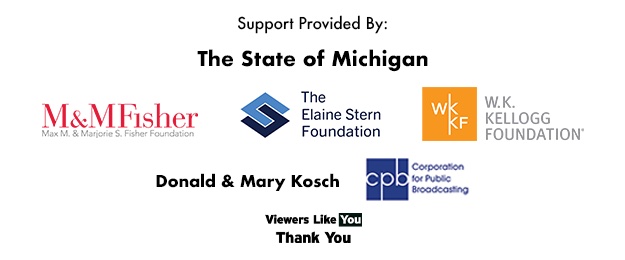Subjects
Shows
Use an apostrophe to form contractions and frequently occurring possessives.
Generalize learned spelling patterns when writing words (e.g., cage → badge; boy → boil).
Consult reference materials, including beginning dictionaries, as needed to check and correct spellings
I can recognize and explain how formal English differs from informal English. I can use formal and informal English when [...]
I can determine the meaning of an unknown word using context clues. I can determine the meaning of an unknown [...]
Use sentence-level context as a clue to the meaning of a word or phrase.
Determine the meaning of the new word formed when a known prefix is added to a known word (e.g., happy/unhappy, [...]
Use a known root word as a clue to the meaning of an unknown word with the same root (e.g., [...]
Use knowledge of the meaning of individual words to predict the meaning of compound words (e.g., birdhouse, lighthouse, housefly; bookshelf, [...]
Use glossaries and beginning dictionaries, both print and digital, to determine or clarify the meaning of words and phrases.
I can make real-life connections to words I hear and read. I can recognize verbs and adjectives that have similar [...]
Identify real-life connections between words and their use (e.g., describe foods that are spicy or juicy).
Distinguish shades of meaning among closely related verbs (e.g., toss, throw, hurl) and closely related adjectives (e.g., thin, slender, skinny, [...]
I can discover new words and phrases through reading, listening, and conversation. I can use my new words and phrases [...]
I can introduce an informational topic. I can use facts to explain my informational topic. I can write a concluding [...]
I can write a narrative with a beginning, middle and end. I can include details that describe actions, thoughts, and [...]
I can recognize that a good piece of writing requires more than one draft. I can revise my writing with [...]
I can identify digital tools that will help me produce and publish my writing. I can use digital tools to [...]
I can define research and explain how it is different from other types of writing. I can research a topic [...]
I can identify and follow up on rules for discussion. I can make connections between comments of others.
Follow agreed-upon rules for discussions (e.g., gaining the floor in respectful ways, listening to others with care, speaking one at [...]
Build on others’ talk in conversations by linking their comments to the remarks of others.
Ask for clarification and further explanation as needed about the topics and texts under discussion.
I can identify information from a text being read aloud. I can identify information that is presented in different formats. [...]
I can ask a speaker questions to get more information, to understand a topic better. I can ask a speaker [...]
I can tell a story or share an experience with facts and appropriate details. I can tell a story or [...]
I can read aloud stories or poems and use my voice to make them come to life. I can speak [...]
I can recognize a complete sentence. I can speak using complete sentences.
I can define collective nouns and use them correctly. I can identify irregular plural nouns and use them correctly. I [...]
Form and use frequently occurring irregular plural nouns (e.g., feet, children, teeth, mice, fish).
Form and use the past tense of frequently occurring irregular verbs (e.g., sat, hid, told).
I can recognize the main idea in a text with more than one paragraph. I can identify what each paragraph [...]
I can identify historical events. I can identify scientific ideas or concepts. I can identify the steps in a process. [...]
I can identify words and phrases that are specific to a the topic of a text. I can use information [...]
I can identify and give examples of text features. I can explain how text features help locate key facts or [...]
I can identify purposes for reading. I can read a text and identify the author's main purpose for writing it.
I can explain how the images add meaning to words. I can use images and words in a text to [...]
I can identify specific points the author makes in a text. I can describe the reasons the author uses to [...]
I can identify the most important points found in two texts on the same topic. I can compare the most [...]
I can decode words with short vowel sounds. I can recognize familiar short vowel spelling patterns. I can decode words [...]
Distinguish long and short vowels when reading regularly spelled one-syllable words.
Know spelling-sound correspondences for additional common vowel teams.
Identify words with inconsistent but common spelling-sound correspondences.
Subjects
Shows
Use an apostrophe to form contractions and frequently occurring possessives.
Generalize learned spelling patterns when writing words (e.g., cage → badge; boy → boil).
Consult reference materials, including beginning dictionaries, as needed to check and correct spellings
I can recognize and explain how formal English differs from informal English. I can use formal and informal English when [...]
I can determine the meaning of an unknown word using context clues. I can determine the meaning of an unknown [...]
Use sentence-level context as a clue to the meaning of a word or phrase.
Determine the meaning of the new word formed when a known prefix is added to a known word (e.g., happy/unhappy, [...]
Use a known root word as a clue to the meaning of an unknown word with the same root (e.g., [...]
Use knowledge of the meaning of individual words to predict the meaning of compound words (e.g., birdhouse, lighthouse, housefly; bookshelf, [...]
Use glossaries and beginning dictionaries, both print and digital, to determine or clarify the meaning of words and phrases.
I can make real-life connections to words I hear and read. I can recognize verbs and adjectives that have similar [...]
Identify real-life connections between words and their use (e.g., describe foods that are spicy or juicy).
Distinguish shades of meaning among closely related verbs (e.g., toss, throw, hurl) and closely related adjectives (e.g., thin, slender, skinny, [...]
I can discover new words and phrases through reading, listening, and conversation. I can use my new words and phrases [...]
I can introduce an informational topic. I can use facts to explain my informational topic. I can write a concluding [...]
I can write a narrative with a beginning, middle and end. I can include details that describe actions, thoughts, and [...]
I can recognize that a good piece of writing requires more than one draft. I can revise my writing with [...]
I can identify digital tools that will help me produce and publish my writing. I can use digital tools to [...]
I can define research and explain how it is different from other types of writing. I can research a topic [...]
I can identify and follow up on rules for discussion. I can make connections between comments of others.
Follow agreed-upon rules for discussions (e.g., gaining the floor in respectful ways, listening to others with care, speaking one at [...]
Build on others’ talk in conversations by linking their comments to the remarks of others.
Ask for clarification and further explanation as needed about the topics and texts under discussion.
I can identify information from a text being read aloud. I can identify information that is presented in different formats. [...]
I can ask a speaker questions to get more information, to understand a topic better. I can ask a speaker [...]
I can tell a story or share an experience with facts and appropriate details. I can tell a story or [...]
I can read aloud stories or poems and use my voice to make them come to life. I can speak [...]
I can recognize a complete sentence. I can speak using complete sentences.
I can define collective nouns and use them correctly. I can identify irregular plural nouns and use them correctly. I [...]
Form and use frequently occurring irregular plural nouns (e.g., feet, children, teeth, mice, fish).
Form and use the past tense of frequently occurring irregular verbs (e.g., sat, hid, told).
I can recognize the main idea in a text with more than one paragraph. I can identify what each paragraph [...]
I can identify historical events. I can identify scientific ideas or concepts. I can identify the steps in a process. [...]
I can identify words and phrases that are specific to a the topic of a text. I can use information [...]
I can identify and give examples of text features. I can explain how text features help locate key facts or [...]
I can identify purposes for reading. I can read a text and identify the author's main purpose for writing it.
I can explain how the images add meaning to words. I can use images and words in a text to [...]
I can identify specific points the author makes in a text. I can describe the reasons the author uses to [...]
I can identify the most important points found in two texts on the same topic. I can compare the most [...]
I can decode words with short vowel sounds. I can recognize familiar short vowel spelling patterns. I can decode words [...]
Distinguish long and short vowels when reading regularly spelled one-syllable words.
Know spelling-sound correspondences for additional common vowel teams.
Identify words with inconsistent but common spelling-sound correspondences.


